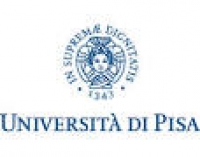






The goal of this degree course is to form professionals combining a sound grounding in the fields of history, geography, Italian literature and a second European language, with such specific competences in the different branches of the cultural heritage as to be able to understand and implement any new scholarly, methodological and technological innovations. Graduates in Cultural Heritage Studies will be capable of: • delivering technical assistance in the different branches of the Cultural Heritage (archaeological, art-historical, and libraries and archives), according to the curriculum in which they have enrolled; • recognizing their professional and ethical duties; • working independently and as part of a team according to their set levels of autonomy; • fitting into varying working environments ranging from public institutions to state departments, from schools to private enterprises etc.; The Degree Course’s structure is arranged over three specific curricula for each main section of the cultural heritage: • Archaeology • History of Art • Libraries and Archives. For each of the three curricula there will be two three-year options, the choice being between a profession-oriented and a methodological course of studies, the latter being propaedeutic to higher study. These two courses will have in common the first two years with their foundation and core subjects; they will differ with respect to subsidiary and related subjects, as well as to practicals, stages and laboratories which carry a heavier weight in the profession-oriented course of studies. All three curricula will also include a high-flyer pathway distinguished by additional activities, consistent high-grade scoring and the completion of the degree course by the statutory deadline.
| Number | Duration |
|---|---|
| 3 | year |
Graduates will achieve (each in his/her chosen curriculum): • the appropriate range of knowledge and competence (in the field of archaeology this will range from pre-history to the middle ages, from the Mediterranean area to the near East, from landscape to urban archaeology and archeometry etc.; in the field of art history the time span will cover from the middle ages to the XXI century, ranging from Italian to European and North-American art, including architecture and the applied arts; in the field of libraries and archives they will be familiar with a variety of archival sources ranging from manuscripts to incunabula, old and modern printed editions); • relevant technical and operational knowledge (including morphological and structural awareness) of the different types of cultural heritage, the properties of their media and materials, of the methodologies based on technical analysis and of the available conservation and preservation technologies; • appropriate knowledge of the legal framework, managment procedures and presentation techniques.